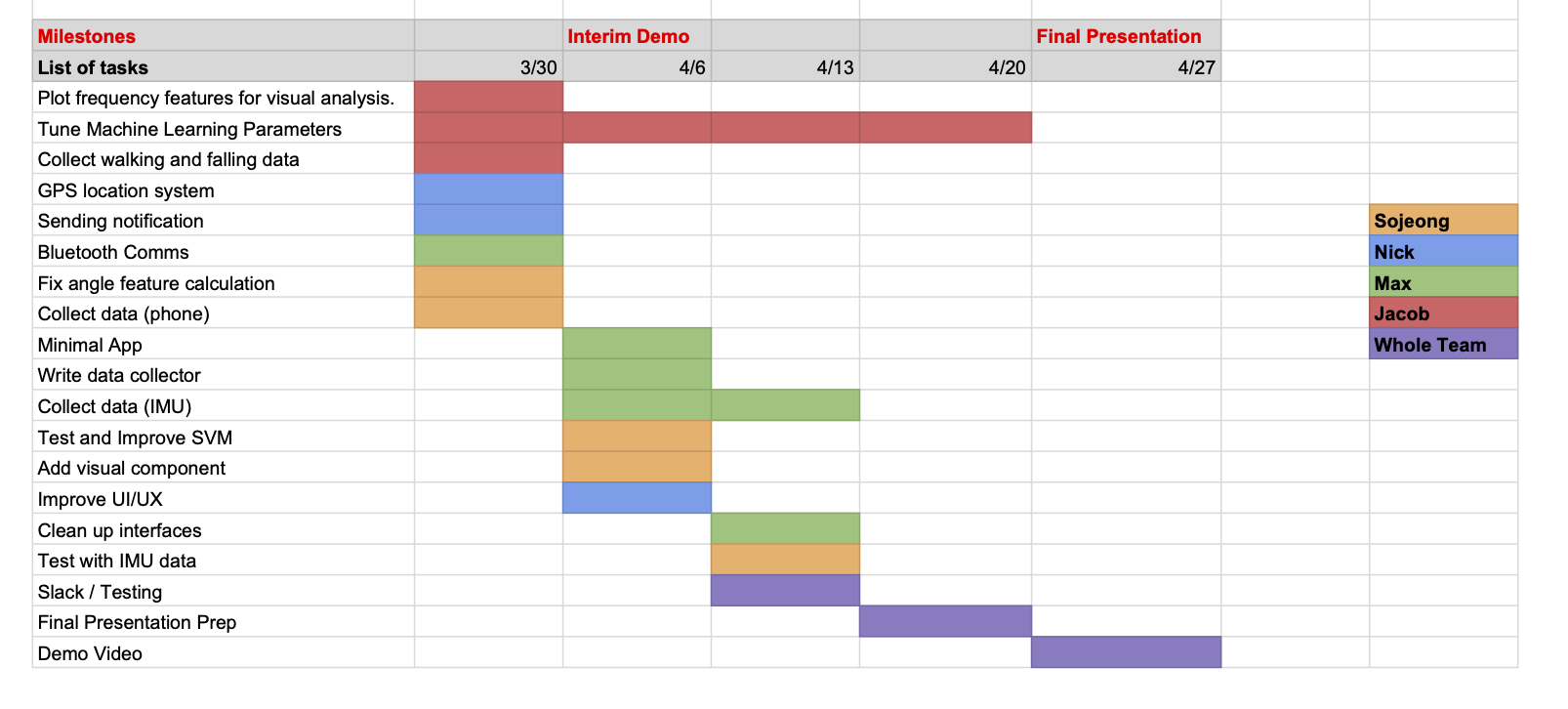Updated Gantt Chart

Updated Risk Management
Data Collection :
Our major concern with the project is collecting the data set that is large enough to train our machine learning algorithm. In order to do this, we ordered a dummy to easily collect a large data set without us having to fall all the time. The test dummy is an easy way to collect data, but there is a risk that it might deviate from the data collected from actual humans. In order to mitigate this risk, we are also collecting the data of us falling.
Machine Learning Based Prediction :
Another concern was the low accuracy of the machine learning algorithm. In order to reduce the accuracy risks, we compared the SVM and RNN approaches to fall detection. We will also try training our model with a variety of preprocessed features (tuple of raw acceleration, magnitude, and angle) and find the feature combination and hyperparameters that achieve the best accuracy.
Hardware Compatibility and Accessibility:
At the outset, we anticipated that data collection and the accuracy of our ML approach would be the greatest risks. Now that we’re separated, data collection through our device is an even bigger problem, and so we’ve decided to begin collecting and tagging accelerometer data from our phones to supplement it. By configuring the discrete IMU a bit differently (50Hz datarate), we can match the data formats and provide both to the ML.
Ordering of Components:
We ordered all of the required components to complete the project successfully and by now they have been shipped to the relevant team members.
